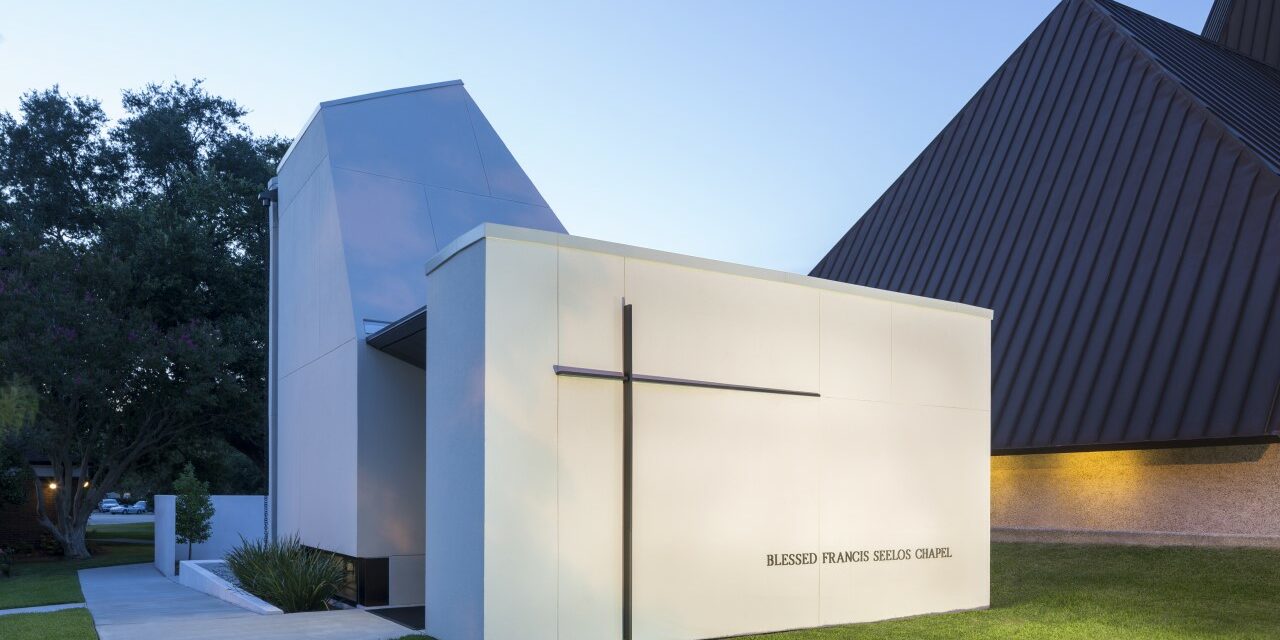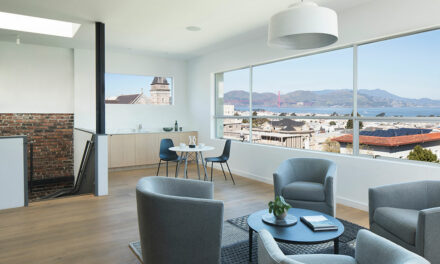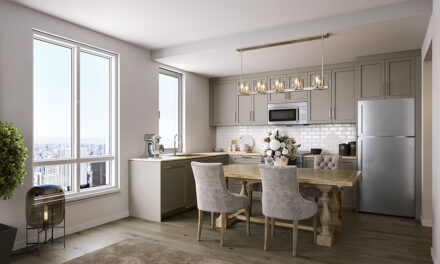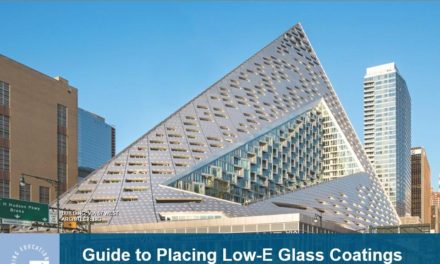Designed as an intimate sanctuary for quiet, individual prayer, the new adoration chapel on the St. Pius campus is a subtle sculptural addition to the landscape.
In meetings prior to the start of design, congregants were clear that the new chapel should complement the formal character of the adjacent 1960s church and its striking, monumentally-scaled copper roof, which rises in orchestrated planes from ground level to more than 75 feet above the church floor.
The new chapel is a delicately-placed, quiet counterpoint to the adjacent church, contrasting in scale but similar in form and material. The tall, angled shape of the chapel ties the building to its neighbor and creates a soaring space for worshippers within—a cathedral for one. The sculpted form is carefully carved on two sides and at the roof, allowing light to leak in from above the ceiling, along the floor, and adjacent to the sacred tabernacle.
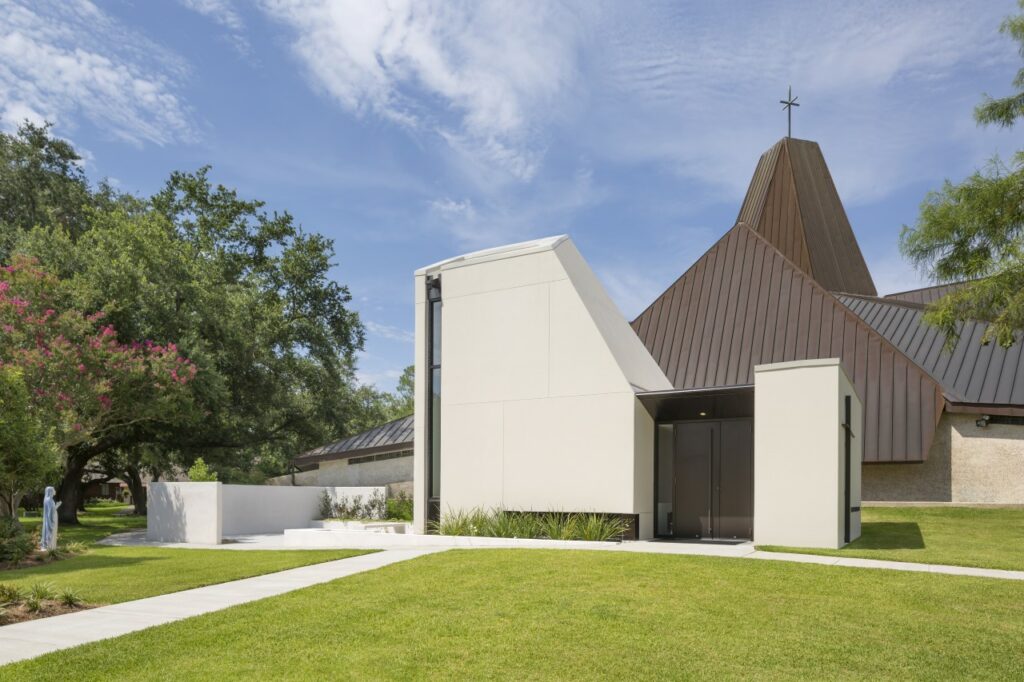
Photo credit: © Will Crocker
The configuration of the floor plan allows the visitor to enter into a small vestibule separated from the sanctuary by a slatted wood screen wall, affording privacy to worshippers already occupying the space. The space’s power is enhanced by its simplicity; the sculpted volume of white planes is activated throughout the day as the sun washes across the surfaces from different angles. Even the Christian cross, adjacent to the tabernacle, is expressed by grazing light rather than requiring an additional component in the space. The material focus is placed on the custom wood tabernacle containing the Holy Eucharist, drawing the worshippers’ full attention to the object of adoration in a space filled with divine, quiet light and absent of distraction.
The Archdiocese of New Orleans selected Eskew+Dumez+Ripple for the design of the new adoration chapel to replace a nondescript temporary chapel embedded in an existing building. As a truly community-driven, grass roots effort, this project was conceived and approved by the parishioners, who were able to fund the project with a robust capital campaign within the parish. During the planning phase, it was clear that the parishioners desired a significant improvement from the existing facility, to a space more suitable for sacred reflection and worship.
The initial concept developed by the parish advocated the physical connection of the new chapel to the existing rectory in order to allow both the chapel and the rectory to share an existing brick patio and use it as a prayer garden. Eskew+Dumez+Ripple worked with the pastor to steer the design in a different direction, reorienting the new chapel adjacent to the church and creating a new prayer garden, allowing intimate reflection in an exterior setting adjacent to the chapel. While this represented a distinctly different approach to the project than what the client originally envisioned, it was extremely well received by both the pastor and the parishioners.
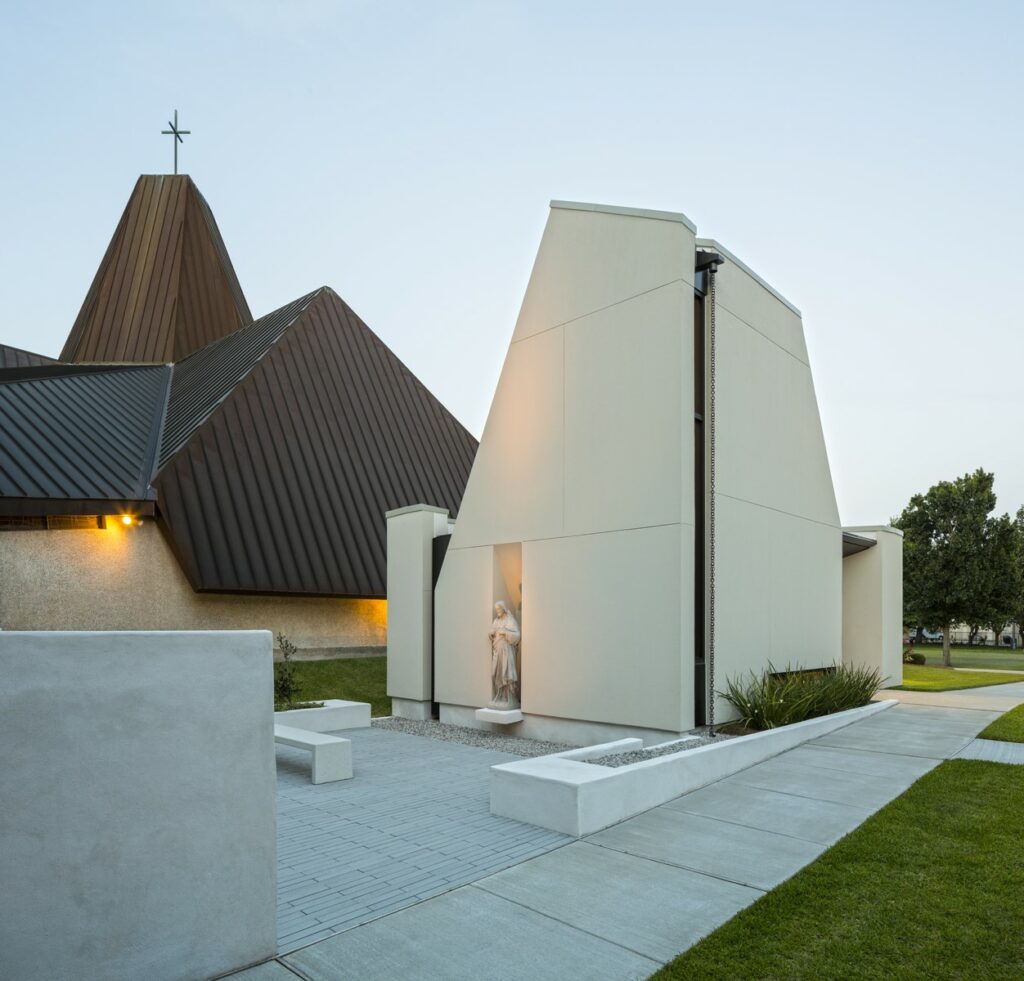
Photo credit: © Will Crocker
“St. Pius’s adoration chapel is my favorite prayer spot. It serves as my haven from the chaos of contemporary life. Both the quiet and the peaceful atmosphere allow me the opportunity to focus on God’s hand in my life. When I see others in the chapel with me, it always makes me smile at the thought that God is listening to each one of us as if we were alone. It many ways the chapel feels like home!” – Susie Veters, a parishioner
Sustainable design features are incorporated throughout several key areas of the St. Pius Chapel and Prayer Garden. In particular, the elements of glass, light and water were taken into consideration to create an efficient building with low energy usage and minimal drainage issues.
In order to create a serene, solitary experience within the chapel, the design emphasizes quality rather than quantity of glazing. At three locations in the chapel, thin strips of glass allow modulated light to enter and glance off various surfaces to create a soft, indirect glow within the prayer area. The intent was to use reflected light exclusively in order to activate the surfaces without overlighting the space. The resulting lighting condition requires no supplemental electric lighting and creates a calm, natural aura within the sculpted space.
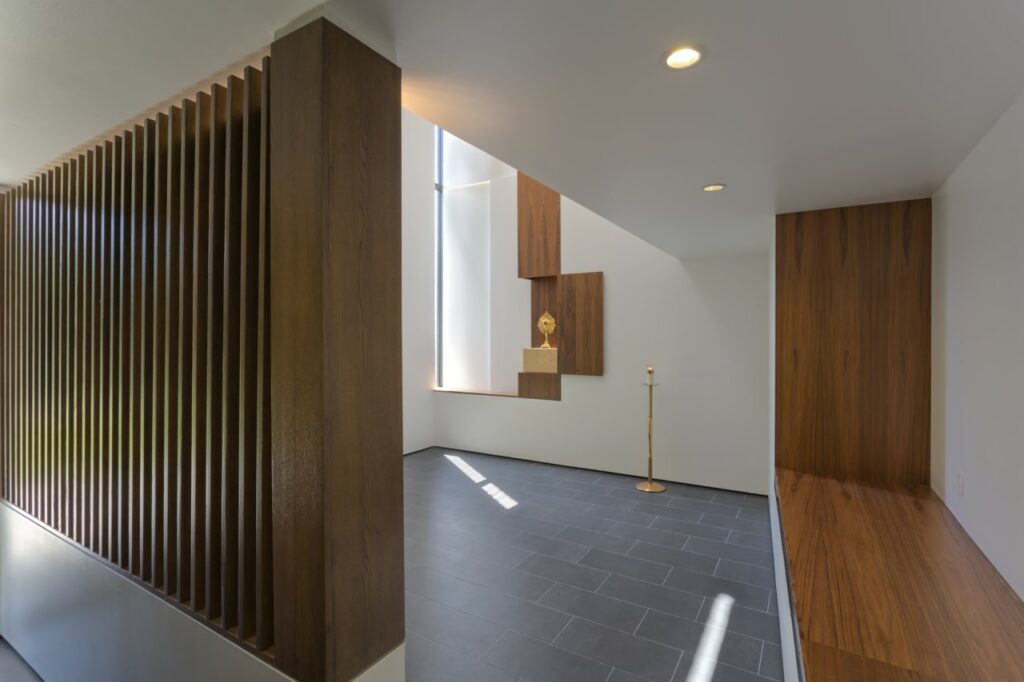
Photo credit: © Will Crocker
The additional advantage of this restrained use of glass is that the majority of the envelope is insulated given the very low window to wall ratio of 4% (66 sf of glass) minimizing thermal gains in this hot humid climate.
The prayer garden surface is precast concrete pavers laid on a deep layer of crushed stone serving as a retention basin for storm water. All water collected on the rectory’s roofs and lawn is shepherded through various gutters and slopes into the crushed stone beneath the prayer garden, which holds a significant volume of runoff. Due to the effective capacity of this basin, the site can handle all of its stormwater up to a 2.5” rain event without overflowing into the city’s overtaxed stormwater drainage system.
The minimalist material strategy avoids the use of non-essential materials. The Chapel’s envelope is cement plaster with accents of aluminum and glass, inverting the material logic of the adjacent church structure whose large copper roof rests on concrete walls. The interior is painted gypsum board with wood millwork and porcelain tile flooring. In selecting inherently low-VOC porcelain tile and low-VOC paint, they created a healthy interior environment for chapel visitors. The porcelain tile flooring also provides a durable surface with an inherently low life cycle impact compared to other resilient floor materials like vinyl or rubber.
Project team
Architect of Record: Eskew+Dumez+Ripple
MEP Engineer: Mazzetti Inc.
Structural Engineer: Robert A. Bouchon, Consulting Engineer, LLC
Civil Engineer: Robert A. Bouchon, Consulting Engineer, LLC
General Contractor: Voelkel McWilliams Construction, LLC
Project address
6666 Spanish Fort Blvd., New Orleans, Louisiana 70124
Photographers
Will Crocker Photography
will@willcrocker.com
Frank J. Methe
fmethe@clarionherald.org

